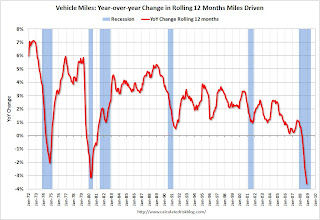by Calculated Risk on 2/20/2009 02:42:00 PM
Friday, February 20, 2009
Report: Geithner to Provide Bank Bailout Details Next Week
From Bloomberg: U.S. Stocks Pare Drop on Speculation Treasury to Detail Bailout
[CNBC reported] that the Treasury Department will release some details of its plan to rescue the financial system next week.From the WSJ: White House Says Banks Shouldn't Be Nationalized
Amid fears that Citigroup Inc. and Bank of America Corp. could be on the verge of being nationalized, the White House gave assurances that it prefers banks to remain out of the government's hands.The key for Geithner is to explain what "stress test" means, how the stress tests are proceeding, and when the tests will be complete.
"This administration continues to strongly believe that a privately held banking system is the correct way to go, ensuring that they are regulated sufficiently by this government," White House spokesman Robert Gibbs said Friday. "That's been our belief for quite some time, and we continue to have that."
If Geithner just talks about the Public-Private Investment Fund his speech will probably not be well received. Three words for Geithner: Stress Test. Explain.
Dodd: Short-Term Bank Nationalization "may happen"
by Calculated Risk on 2/20/2009 01:23:00 PM
From Bloomberg: Dodd Says Short-Term Bank Nationalization Might Be Necessary
Senate Banking Committee Chairman Christopher Dodd said it may be necessary to nationalize some banks for a short time ...More cliff diving for the big banks.
“I don’t welcome that at all, but I could see how it’s possible it may happen,” Dodd said in an interview on Bloomberg Television’s “Political Capital with Al Hunt” to be broadcast later today. “I’m concerned that we may end up having to do that, at least for a short time.”
Also, the S&P 500 is flirting with the closing low from last November 20th of 752.44. The last time the S&P 500 index was lower was in early 1997 - about 12 years ago - this doesn't include divdends, but that is a lost decade for U.S. investors.
Bond Trading Highest Since ‘07
by Calculated Risk on 2/20/2009 12:43:00 PM
From Bloomberg: Bond Trading Highest Since ‘07 as Credit Freeze Thaws
Corporate bond trading in the U.S. is rising to the highest level in two years, adding to evidence that credit markets are thawing even with stocks off to their worst start since the 1920s.Bonds are trading but yields are very high:
An average $17.1 billion of corporate bonds traded daily this month, following $17.7 billion in January, according to the Financial Industry Regulatory Authority. The business is up from last year’s low of $9.4 billion in August and reached the highest level since February 2007 ...
Investors are betting yields are high enough to compensate for defaults that Moody’s Investors Service forecast will rise to 16.4 percent by November, the highest since the Great Depression and about three times the current rate.The following graph shows the spread between 30 year Moody's Aaa and Baa rated bonds and the 30 year treasury.
The Moody's data is from the St. Louis Fed:
Moody's tries to include bonds with remaining maturities as close as possible to 30 years. Moody's drops bonds if the remaining life falls below 20 years, if the bond is susceptible to redemption, or if the rating changes.
 Click on table for larger image in new window.
Click on table for larger image in new window.There has been some improvement (decline in spread) in recent weeks, but the spreads are still very high, even for higher rated paper, but especially for lower rated paper with a spreads still above the high level of the early '80s recession.
 There has also been improvement in the A2P2 spread. This has declined to 1.09. This is far lower than the record (for this cycle) of 5.86 after Thanksgiving, but still too high.
There has also been improvement in the A2P2 spread. This has declined to 1.09. This is far lower than the record (for this cycle) of 5.86 after Thanksgiving, but still too high. This is the spread between high and low quality 30 day nonfinancial commercial paper. Look at the graph - there was significant concern when the A2P2 spread spiked in 2007 and 2008 (the three little peaks). Now the spread is back to the highest level of those peaks!
 | It is also worth mentioning that the TED spread is below 1.0. This is the difference between the interbank rate for three month loans and the three month Treasury. The peak was 4.63 on Oct 10th and a normal spread is around 0.5. |
Big Bank Cliff Diving
by Calculated Risk on 2/20/2009 12:09:00 PM
More cliff diving today ...
BofA off 18%
Citi off 22%
Wells Fargo off 18%
And the phrase of the day "legacy loans" (ht Atrios)
I'm pretty sure a legacy loan is one the banks now wish they hadn't made.
Failed Banks and CDs
by Calculated Risk on 2/20/2009 10:07:00 AM
I frequently receive questions about what happens to FDIC insured CDs when a bank fails.
Tom Petruno at the LA Times explains: If your bank is bought, your CD yields could be slashed
Late last year, struggling [Culver City-based Alliance Bank] had been offering yields of 4% or higher on one-year certificates of deposit -- well above market averages -- as it sought to pull in cash to stay alive.The acquiring bank has the option of paying the higher yield, or they could lower the yield, and give the borrower the option of accepting the new rate or withdrawing their money without penalty. Note that the CD investor does receive the higher yield up to the day the bank is seized.
...
[Alliance] was seized by the Federal Deposit Insurance Corp. on Feb. 6, and was sold to California Bank & Trust of San Diego.
...
California Bank & Trust didn’t pay those kind of yields, and won’t now: The bank has sent letters to Alliance customers telling them that the annualized yields on their CDs will be unilaterally reduced to 1.4%.
If depositors don’t like that yield they’re free to cash out, with interest earned to date and without an early-withdrawal penalty ...
Lowe's: Same Store Sales to Decline 6% to 10%
by Calculated Risk on 2/20/2009 09:07:00 AM
From the WSJ: Lowe's Profit Drops Sharply, Evaluates Expenses
Lowe's Cos.' fiscal fourth-quarter net income dropped 60% on falling sales and margins as the world's second-largest home-improvement retailer projected earnings below analysts' expectations.According to the BEA data, home improvement has held up better than other areas of residential investment:
...
Lowe's expects first-quarter ... same-store sales falling 6% to 10%.
Chief Executive Robert Niblock said Friday economic pressures continued to sap consumer confidence and spending, resulting in weak same-store sales.
 Click on graph for updated image in new window.
Click on graph for updated image in new window.This graph shows home improvement investment as a percent of GDP.
Home improvement was at 1.20% of GDP in Q4 2008, off the high of 1.30% in Q4 2005 - but still well above the average of the last 50 years of 1.07%.
This would seem to suggest there remains significant downside risk to home improvement spending over the next couple of years (although some analysts disagree with the BEA numbers).
UK: Homeowners Mortgage Support scheme
by Calculated Risk on 2/20/2009 01:40:00 AM
They are taking a different approach to help homeowners in England.
From The Times: Homeowners will get £500m in mortgage assistance to counter rise in repossessions
[T]he Homeowners Mortgage Support scheme ... will allow borrowers with mortgages up to £400,000 to take a payment holiday if they have suffered an “income shock”, such as losing their job or having their hours cut.The borrower will have to pay back the interest (with interest), so this is really a NegAM scheme. For homeowners with negative equity, this will just put them further underwater.
It is expected to announce today that the scheme will allow borrowers to defer payments on up to 70 per cent of their mortgage interest for up to two years. The repayments of a borrower in the scheme with a £150,000 mortgage at 3.5 per cent interest would fall from £437.50 to £131.
The Government will also pledge to guarantee 80 per cent of the deferred payments if borrowers fail to cover their mortgage payments and subsequently lose their homes. If the repossessed property is sold at a loss, the lender will claw back money from the Treasury.
This scheme is intended for homeowners who have suffered an "income shock" during the recession, unlike the U.S. plan that includes homeowners who used excessive leverage during the bubble.
Thursday, February 19, 2009
Markets and more
by Calculated Risk on 2/19/2009 09:47:00 PM
 First a cartoon from reader Evan.
First a cartoon from reader Evan.
I think this captures the sentiment of many renters and prudent homeowners.
I have no problem with the first and third parts of the Obama housing plan, but I think part 2 does reward some borrowers who used excessive leverage, and the banks that irresponsibly loaned them money. It would have been nice to exclude all borrowers with stated income / Alt-A loans, and any loan were the original fully amortized payment was greater than 38% or so of gross income. Those buyers were speculating on appreciation.
On the markets ...
The DOW closed at 7,465.95; a six year low. The low in 2002 was 7286.27, if the market breaks that level, the DOW will be back to 1997 levels. That would mean more than a lost decade for DOW investors (not counting dividends).
As an aside, Greenspan made the "irrational exuberance" comment in a speech on December 5, 1996 with the DOW at 6,437. Not a prediction, but we are getting close to that level over 12 years later!
The S&P 500 is still a little above the low of last year, as is shown on the following graph: Click on graph for updated image in new window.
This graph is from Doug Short of dshort.com (financial planner): "Four Bad Bears". (if smaller graph isn't updated, click for larger graph)
Note that the Great Depression crash is based on the DOW; the three others are for the S&P 500.
And for all those who think this is all doom and gloom, Paul Kasriel wrote today: SIVs Got Us into Trouble – SIVs to the Rescue?
[W]e believe that the nadir of this recession is occurring now. Moreover, we believe that the combination of the $1 trillion TALF program and the $787 billion fiscal stimulus program, assuming it is financed by the banking system and the Fed, will have a salutary effect on aggregate real activity, perhaps inducing an economic recovery by the fourth quarter of this year.By "nadir", Kasriel doesn't mean the lowest point for GDP, but that he believes the worst percentage decline in GDP is happening this quarter - and he is forecasting a 6.4% annualized decline in real GDP for Q1.
Charlie Rose: Nouriel Roubini, Mark Zandi, and Fred Mishkin
by Calculated Risk on 2/19/2009 07:36:00 PM
Charlie Rose interviews Professor Nouriel Roubini, Mark Zandi chief economist for economy.com, and Fred Mishkin (ex-Fed Governor, Professor Columbia University):
The TARP Visualized
by Calculated Risk on 2/19/2009 05:41:00 PM
This is making the rounds. Enjoy... (hat tip Nick in Kyoto, original source unknown)
Edit: Yes, the last couple are obviously fake. More on the source from snopes. (ht Tim at Seattlebubble.com)
Click on photos for larger image in new window.
 |
 |
 |
 |
 |
 |
 |
 |
 |
 |
Federal Reserve Assets Starting to Increase Again
by Calculated Risk on 2/19/2009 04:30:00 PM
The Federal Reserve released the Factors Affecting Reserve Balances today. Total assets increased $72.2 billion to $1.92 trillion. The increase was mostly due to the Federal Reserve buying $57.9 billion in mortgage-backed securities (MBS) guaranteed by Fannie Mae, Freddie Mac, and Ginnie Mae.
Click on graph for larger image in new window.
After spiking last year to $2.31 trillion the week of Dec 18th, the Federal Reserve assets have declined somewhat. Now it looks like the Federal Reserve is starting to expand their balance sheet again.
In a related story from Reuters: U.S. mortgage rates drop toward record low: Freddie
Interest rates on standard U.S. 30-year mortgages dropped in the latest week to levels just shy of record lows as concerns of a deepening recession boosted the appeal of fixed-rate investments, Freddie Mac said on Thursday.Note: the graph shows Total Factors Supplying Federal Reserve Funds and is an available series that is close to assets.
The average fixed 30-year mortgage rate declined to 5.04 percent in the week ending Thursday, from 5.16 percent in the previous period, Freddie Mac said in a statement. That was close to the 4.96 percent reached in mid-January, which was the lowest rate since Freddie Mac began its survey in 1971.
Three trillion here we come!
DataQuick: California Home Sales Increase
by Calculated Risk on 2/19/2009 02:59:00 PM
Two reports from DataQuick on California:
Southland home sales rise on inland surge; median price falls again
Southern California home sales climbed above year-ago levels for the seventh consecutive month in January as bargain-hungry buyers flocked to inland areas pounded by foreclosures and deep discounts. Increased affordability in some of those neighborhoods spurred record or near-record resale activity, while many pricier coastal towns again posted some of their slowest sales in two decades.Bay Area home sales top last year again; median drops to $300K
Foreclosures continued to play a leading role in the market, accounting for nearly 60 percent of all homes that resold, according to San Diego-based MDA DataQuick, a real estate information service. Sales of newly built homes were the lowest for a January in at least 21 years - partially a reflection of how difficult it is for builders to compete with discounted foreclosures in the inland growth areas.
...
Last month's foreclosure resales - homes resold in January that had been had been foreclosed on in the prior 12 months - represented 58.3 percent of all resales, up from 56.2 percent in December and 28.6 percent a year ago. At the county level, foreclosure resales ranged from 46.0 percent of January resales in Orange County to 71.2 percent in Riverside County. In Los Angeles foreclosure resales were 51.9 percent of resales; in San Diego 55 percent; San Bernardino 67.3 percent and in Ventura County 49.1 percent.
Bay Area home sales rose above a year ago for the fifth consecutive month in January. Home buying remained slow in pricier coastal markets but was robust in many inland areas where steep price declines have boosted affordability and, in some cases, driven sales of existing houses to record levels.Sales in higher priced areas are at or near record lows. Sales in some low prices areas (with significant foreclosure activity) are at record highs. Talk about two very different markets.
The role of foreclosures in the housing market continued to grow, representing 54 percent of the Bay Area homes that resold last month ... resales of single-family detached houses hit record levels last month in San Pablo, Richmond, Pittsburg, Antioch, Oakley, Fairfield and San Pablo - areas that have attracted bargain hunters with their relatively large price drops and abundant foreclosures.
At the county level, foreclosure resales last month ranged from 16.4 percent of resales in San Francisco to 75.2 percent in Solano County. In the other seven counties, January foreclosure resales were as follows: Alameda, 51.9 percent; Contra Costa, 64.4 percent; Marin, 26.2 percent; Napa, 48.1 percent; Santa Clara, 45.6 percent; San Mateo, 34.1 percent; Sonoma, 55.6 percent.
Fed Announces Written Agreements with Four Banks
by Calculated Risk on 2/19/2009 02:44:00 PM
A few more candidates for Friday afternoon blogging.
And a related story from Bloomberg: U.S. Offers Discounts to Lure Buyers of Failed Banks
U.S. regulators are being forced to sell real-estate loans of failed banks at a discount to lure buyers spooked by the likelihood of increased loan losses amid a deepening recession.
...
Buyers for banks are in short supply after last year, when regulators closed the most lenders since 50 were shuttered in 1993. RBC Capital Markets analyst Gerard Cassidy predicts as many as 1,000 more will collapse within five years. The result may be a buyer’s market in which the FDIC will lay out even bigger sums to get rid of seized banks.
...
Florida’s largest bank, BankUnited Financial Corp., said on Jan. 27 that it may face receivership because efforts to raise $400 million in new capital to meet regulatory requirements have failed. ... “Everyone is looking to see how BankUnited is going to be handled because it has one of the most attractive franchises in the country,” Miami banking consultant Kenneth Thomas said. “Buyers want some kind of guarantee that the government will share in the losses, else they aren’t going to get involved.”
Fed's Lockhart sees "catalysts for the start of modest recovery"
by Calculated Risk on 2/19/2009 01:23:00 PM
Excerpts from a speech by Altanta Fed President Dennis (edit) Lockhart today:
[T]he economic outlook is not indefinitely bad. Most forecasts, my own included, see catalysts for the start of modest recovery in the second half of the year.I think almost everyone agrees with the "not indefinitely bad" comment. But I'm interested in what Lockhart sees as "catalysts for recovery":
With production falling—and expected to decline significantly more this quarter—I expect some reduction of excess business inventories, putting producers in a position to expand output as spending returns.Right now it appears inventory levels are too high. In the Philly Fed economic outlook report today, they asked a special question about inventory levels:
In special questions this month, firms were asked about their current inventory situation. Nearly 44 percent of the firms indicated that their inventories were too high and were expected to decrease during the first quarter; 67 percent said their customers' inventory plans had also decreased.So Lockhart might be correct, but it is too early to tell if producers will reduce inventory enough in the first half of 2009 to expand output in the second half of the year.
There are signs lower mortgage interest rates are helping housing markets on the margin. The January pending sales number was up, and there has been a spurt in refinancing activity. If historically low mortgage rates can be sustained over the coming months, I expect more buyers will be drawn into the market.Actually the most recent pending home sales number was for December and the reason it showed an increase was because of more activity in areas with significant foreclosures.
Several factors should lift consumer spending as the year progresses. These factors include the dramatic fall in energy prices, greater stability in the housing market, and improving consumer confidence.This is very possible, but I don't see evidence of this yet.
I should mention that last week the U.S. Census Bureau reported an unexpected increase in retail sales during January. I would like to see further confirmation of the underlying strength hinted at in this report, but on its face, the pickup in consumer spending is encouraging.This is just one month of data and could be related to gift cards, so I wouldn't read much into that small increase.
Also contributing to the upturn seen in the consensus outlook are the large and targeted fiscal, credit, and monetary policies of the government and the Federal Reserve ... The intent of these aggressive and unprecedented policy actions is to support spending and fix the dysfunction in credit markets that has so severely constrained the economy’s natural forces of growth.I think we can start looking for some rays of sunshine, but I don't see anything yet.
Indeed, we have seen modest, but hopeful, signs that financial markets are improving. A key element in the improved economic environment expected in the latter half of the year is that financial institutions will find more stable footing and begin to provide greater support to business expansion and consumer spending.
Rick Santelli: "Chicago Tea Party in July"
by Calculated Risk on 2/19/2009 12:29:00 PM
Some say this is the "rant of the year" ...
Homebuilder Survives Depression, Files Bankruptcy
by Calculated Risk on 2/19/2009 11:36:00 AM
From Bloomberg: WL Homes, Homebuilder, Seeks Bankruptcy, Cites Market Collapse
WL Homes LLC [also does business as John Laing Homes], the 161-year-old homebuilder, filed for bankruptcy protection from creditors with plans to focus on developments in Southern California.Jon Lansner at the O.C. Register had been following WL Homes, from one week ago: Laing Homes lays off 72 O.C. workers
The company blamed its filing on the collapse of the real estate market, saying its 2007 sales had fallen by about half ...
More evidence surfaced this week that all is not well with Newport Beach-based homebuilder John Laing Homes, which apparently has been all-but mothballed by its Dubai-based owner.Not a very good $1 billion investment.
Laing reported that it laid off 72 employees in Orange County on Jan. 15, according to a state Employment Development Department notice published Monday.
...
Rumors have been circulating that the company — sold for $1 billion to Emaar Properties of the United Arab Emirates in June 2006 — has halted work on projects from here to Colorado.
U.S. Vehicle Miles Driven Off 3.6% in 2008
by Calculated Risk on 2/19/2009 11:20:00 AM
The Dept of Transportation reports on U.S. Traffic Volume Trends:
Travel on all roads and streets changed by -1.6% (-3.8 billion vehicle miles) for December 2008 as compared with December 2007. Travel for the month is estimated to be 237.2 billion vehicle miles.
Cumulative Travel for 2008 changed by -3.6% (-107.9 billion vehicle miles). The Cumulative estimate for the year is 2,921.9 billion vehicle miles of travel.
 Click on graph for larger image in new window.
Click on graph for larger image in new window.The first graph shows the annual change in the rolling 12 month average of U.S. vehicles miles driven. Note: the rolling 12 month average is used to remove noise and seasonality.
By this measure, vehicle miles driven are off 3.6% Year-over-year (YoY); the decline in miles driven is worse than during the early '70s and 1979-1980 oil crisis. As the DOT noted, miles driven in December 2008 were 1.6% less than December 2007, so the YoY change in the rolling average may start to increase.
 The second graph shows the change from the same month in the previous year. This is a noisy graph. Although miles driven was 1.6% less in December 2008 as compared to December 2007, the decline from the previous year was much less than the previous months.
The second graph shows the change from the same month in the previous year. This is a noisy graph. Although miles driven was 1.6% less in December 2008 as compared to December 2007, the decline from the previous year was much less than the previous months.For miles driven in December, the sharp decline in gasoline prices offset the impact from the slowing economy.
Philly Fed Survey: Employment index at Record Low
by Calculated Risk on 2/19/2009 10:00:00 AM
Here is the Philadelphia Fed Index released today: Business Outlook Survey.
Conditions in the region's manufacturing sector continued to deteriorate this month, according to firms polled for the February Business Outlook Survey. All of the survey's broad indicators for current activity remained negative and fell from their already low levels in January. Employment losses were more substantial this month, and nearly half of the surveyed firms reported declines in both employment and average hours worked. Firms continued to report declines in input prices and prices for their own manufactured goods. Most of the survey's indicators of future activity improved, continuing to suggest that the region's manufacturing executives expect declines to bottom out over the next six months.
The survey's broadest measure of manufacturing conditions, the diffusion index of current activity, declined from a reading of -24.3 in January to -41.3 this month, its lowest reading since October 1990. The index has been negative for 14 of the past 15 months ...
In special questions this month, firms were asked about their current inventory situation. Nearly 44 percent of the firms indicated that their inventories were too high and were expected to decrease during the first quarter; 67 percent said their customers' inventory plans had also decreased.
The current employment index fell for the fifth consecutive month, dropping seven points, to -45.8, its lowest reading in the history of the survey.
 Click on graph for larger image in new window.
Click on graph for larger image in new window.This graph shows the Philly index vs. recessions for the last 40 years.
"The index has been negative for 14 of the past 15 months, a period that corresponds to the current recession."
Unemployment Claims: Continued Claims Almost 5 Million
by Calculated Risk on 2/19/2009 09:18:00 AM
The DOL reports on weekly unemployment insurance claims:
In the week ending Feb. 14, the advance figure for seasonally adjusted initial claims was 627,000, unchanged from the previous week's revised figure of 627,000. The 4-week moving average was 619,000, an increase of 10,500 from the previous week's revised average of 608,500.
...
The advance number for seasonally adjusted insured unemployment during the week ending Feb. 7 was 4,987,000, an increase of 170,000 from the preceding week's revised level of 4,817,000. The 4-week moving average was 4,839,500, an increase of 92,500 from the preceding week's revised average of 4,747,000.
 Click on graph for larger image in new window.
Click on graph for larger image in new window.The first graph shows weekly claims and continued claims since 1971.
The four week moving average is at 619,000, the highest since 1982.
Continued claims are now at 4.99 million - another new record - above the previous all time peak of 4.71 million in 1982.
Note: I'll normalize by covered employment next week.
Another weak unemployment claims report ...
Roubini: Housing, Stimulus and Nationalization
by Calculated Risk on 2/19/2009 01:11:00 AM
Another upbeat interview with Professor Roubini ...


